Lean Project Management is the evidence that the Lean principles can find beneficial application in many areas.
Delivering value from your customer’s perspective, cutting down waste, and continuously improving help project managers increase their project efficiency and enable them to deliver more with less.
Whereas traditional project management is structured in phases, which separate planning from execution, Lean project management enables teams to deliver faster by managing their workflow efficiently and focuses on delivering value from the customers’ perspective.
To showcase how this works, let`s first look closer at Lean's basics and their role in managing projects.
Applying Lean in Project Management?
The birth of Lean Management can be tracked down to 1940, and in the past 80 years, it has become a universal management tool for work process optimization.
From Lean Manufacturing to The Lean Startup Movement, the core principles remain the same:
1. Identify Value from Your Customers’ Perspective
In a nutshell, identifying value means working to deliver what your customers need instead of what they simply asked for. The value you are producing is inherited in the customers’ problem or pain.
Lean project managers identify and specify value from the customers’ perspective by identifying objectives, requirements, deliverables, and acceptance criteria. The value, or the end result of the project, is what the customer is willing to pay for. Preferably, it should be stated in the customers’ words and should come directly from him/her.
This is one of the main differences between Lean and traditional project management, where the focus is on the business case.
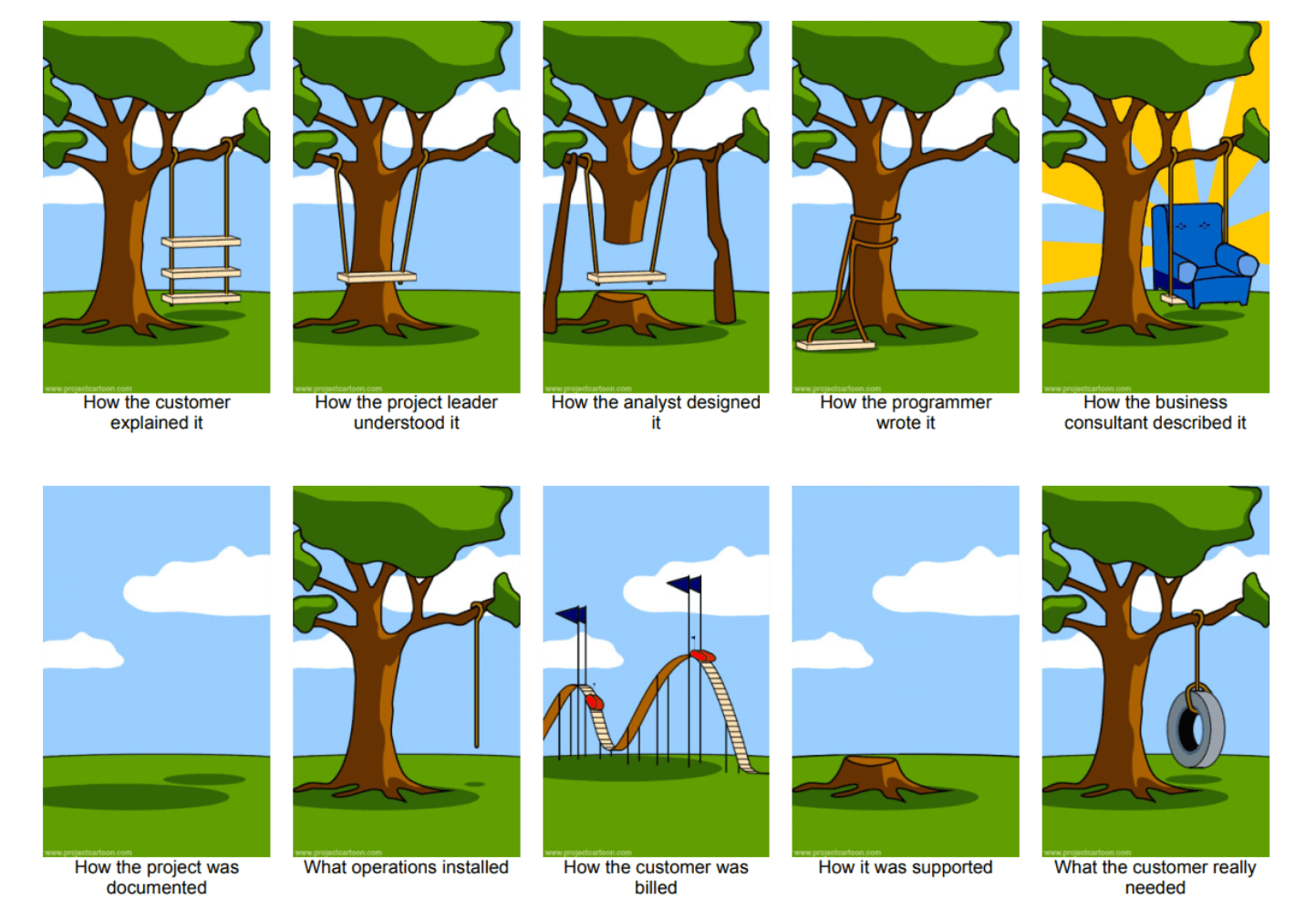 Source: projectcartoon.com
Source: projectcartoon.com
Further on, in Lean, any activity that is not directed at solving the problem and delivering the project's end result is seen as wasted resources. To avoid building up waste, a close relationship and good communication with the customer is essential.
These will also help project managers to clarify requirements that may seem unclear at the beginning of the project. Or to resolve potential conflicts in the value statements with the collaboration of the customer.
Generally, focusing on identifying the value from your customers’ perspective will increase customer satisfaction, reduce project risk, and minimize project waste.
2. Value Stream Mapping
In traditional project management, the next step will be to create a project plan with a work breakdown structure and tasks. However, applying the Lean principles to project management means staying focused on the value.
The next step here will be to create a value stream map. The goal of the map is to show how and where in your organization/team value is being generated. More importantly, it will clarify your overall process, so you can identify flaws or unnecessary steps and eliminate them. This way, you will be able to save previously wasted resources and deliver more with less. Cutting out the wasteful steps of your process can also positively impact your delivery time.
Often, Kanban is first choice when it comes to visualizing a value stream. Mapping it on a Kanban board gives you and your team a direct glimpse of the big picture. This way, you can optimize not only a fraction of your performance but your overall operational efficiency.  As the value your team or organization is producing results from your target market and specific cumulative skill set, your value stream map will typically look similar, if not identical, for your different projects. This means you can continuously optimize your project execution process, and every new project will directly benefit from the optimization steps you have made in the previous ones.
As the value your team or organization is producing results from your target market and specific cumulative skill set, your value stream map will typically look similar, if not identical, for your different projects. This means you can continuously optimize your project execution process, and every new project will directly benefit from the optimization steps you have made in the previous ones.
10 Years Kanban Experience In 1 Free Book.
Project Manager's Guide to Kanban
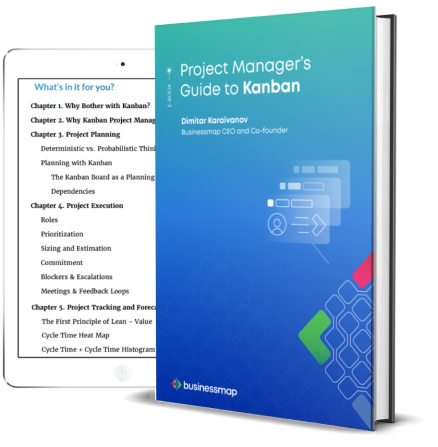
3. Create Continuous Workflow
You have identified the value your customer is seeking to receive, and you have also mapped how you are producing it.
As next, the focus is on ensuring the project can flow smoothly without interruptions, blockages, or waiting times through your system. In other words, to achieve continuous workflow in your project. However, to make this happen, first, you need to eliminate the waste activities from your process.
Lean defines waste as any process step that consumes resources but brings no value from the customers’ perspective. Generally, we distinguish seven types of waste in Lean: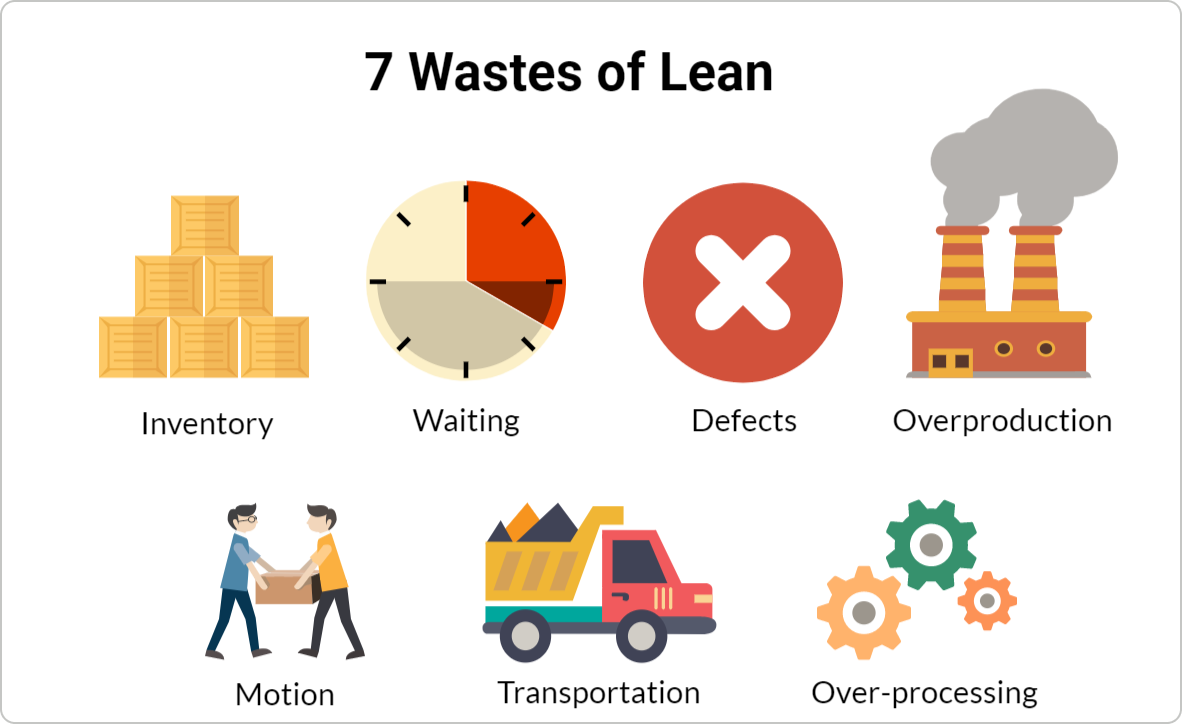
-
Inventory – a typical example of inventory waste is overstocking to meet unexpected demand. In project management, inventory waste is often purchased online tools that teams rarely use or office supplies that exceed needs.
-
Waiting – Whenever a task is not moving, the waste of waiting occurs, interrupting the continuous workflow. Typical in project management is waiting for approval from higher management.
-
Defects – Defects are causing rework or even scrap; defects are hazardous waste. Examples from the project management world would be incorrect data collection, conversation errors, and unclear acceptance criteria.
-
Overproduction - It occurs when you exceed customer demand and produce more than is needed or before it is needed. It is also a hazardous waste type, as it triggers the other six wastes. Overproducing in project management would mean filling an unnecessary great amount of documents or communicating unnecessary information.
-
Motion – To avoid motion waste, you need to arrange a process where workers need to do as little as possible to finish their job. Often in project management, motion waste is generated by searching for information or lack of direct access to data.
-
Transportation – Transportation is wasteful whenever you move resources without this movement generating value to the end product. Task switching, interruptions, and unnecessary outsourcing are prime examples of transportation waste in the project management reality.
- Over-processing – Often manifested as double work or work exceeding customer requirements. In project management, we see overprocessing most often as multiple levels of approval for small tasks, excessive reviews, or too many iterations.
Eliminating these sources of waste from your process will allow the value to flow through your project freely. However, to ensure a continuous workflow, you also have to look out for bottlenecks.
A bottleneck is a stage of your work process where work gets stuck due to capacity shortages. You have a bottleneck when a work stage, even working at its full capacity, still would not manage to process work items quickly enough. As a result, continuous flow is interrupted. Mapping your value stream and visualizing your workflow makes bottleneck and potential process blockages easy to spot. Having removed all these, your process will be stable and will allow you to use the project resources more efficiently.
Mapping your value stream and visualizing your workflow makes bottleneck and potential process blockages easy to spot. Having removed all these, your process will be stable and will allow you to use the project resources more efficiently.
On the other hand, a stable process means a predictable process, which will make it easier for project managers to answer the customers’ favorite question, “When will it be done?”
4. Create a Pull System
A pull system is characterized by work entering the workflow only when there is a demand for it. No work item is being started before there is an actual need for it. The focus is on delivering what the customer wants when she wants it. This way, a pull system avoids building up waste during your project and supports its efficiency and predictability.
However, speaking about workflow management, a pull system also means your team members can pull work items only when they have free capacity. Instead of work being pushed over to you, such a system allows you to prioritize work better and start your next task when you can really work on it.
To better control your “Pull” work system, you can introduce Work in Progress Limits.
WIP Limits are an essential element of the Kanban philosophy with a proven effect on productivity. Limiting the maximum amount of work items in the different stages of the work process minimizes multitasking and context switching. It allows team members to focus on the particular task and to complete it faster. 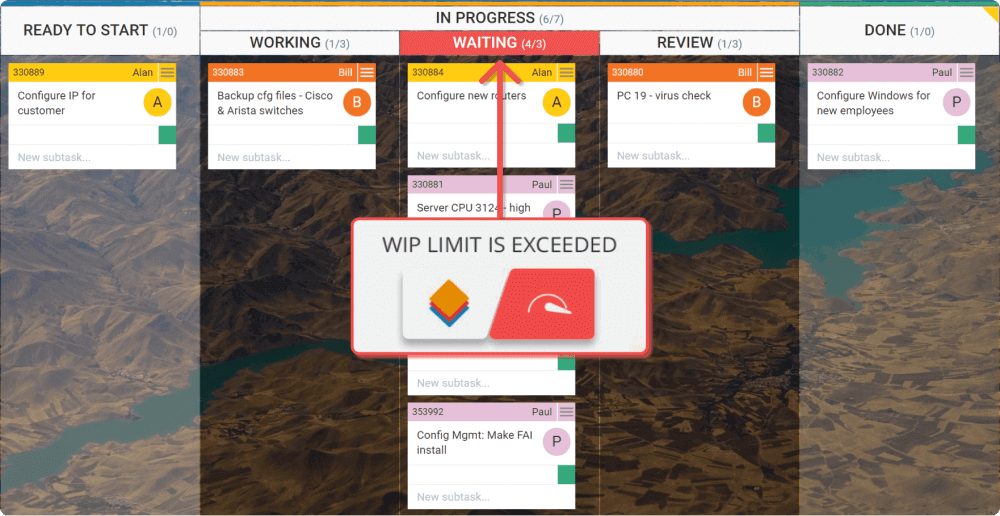 WIP Limits also regulate new work to be pulled into a particular work stage, only when capacity is available. This way, no tasks are being pushed over, and interruptions or overburdening are minimized.
WIP Limits also regulate new work to be pulled into a particular work stage, only when capacity is available. This way, no tasks are being pushed over, and interruptions or overburdening are minimized.
5. Continuous Improvement
Integrating the previous four Lean principles into the way you manage projects, you have already made the transition from traditional to Lean project management. However, this last principle ensures you are not simply switching from A to B. With continuous improvement, you embrace the fact that your work system is not static and will always offer space for improvement. In Lean, striving for perfection is an ongoing effort.
It is important to underline, this should not be seen as the last step of a project. Moreover, it is something you do with every step.
Integrating continuous improvement efforts into your projects, you will transform your organization into a continuous learning system. This way also the optimization of the team performance will be seen as a continuous effort. Further on, with continuous improvement efforts, you ensure build-in project quality, as improving your team performance positively impacts your projects' performance.
Lean Management Tools
Integrating the Lean principles into your project management routine will not happen overnight and without a dedicated effort from the whole team or organization. However, a good start may be adopting one of the following tools, which can accelerate the transition.
PDCA in Lean Project Management
Also known as the Deming Cycle, the Plan-Do-Check-Act cycle is a key instrument of the lean manufacturing toolkit. As the picture represents, it is a four-stage method that includes solutions testing, analyzing results, and improving the process to enable teams to avoid recurring mistakes and improve operations. Through its iterative approach, PDCA is introduced to improve products, services, and overall team performance continuously.
As the picture represents, it is a four-stage method that includes solutions testing, analyzing results, and improving the process to enable teams to avoid recurring mistakes and improve operations. Through its iterative approach, PDCA is introduced to improve products, services, and overall team performance continuously.
In Lean project management, PDCA is a good way to establish a culture of solutions testing on a smaller scale, minimize potential re-work, increase customer satisfaction, and support a continuous improvement mentality.
The goal would be to plan, execute, and test a potential solution as an experiment. After that, you should analyze the results from the customers’ perspective to adopt, optimize, and, if necessary, repeat the cycle.
If adapted in your project management process, the Plan-Do-Check-Act cycle can be another element that grants build-in project quality.
Kanban for Lean Project Management
Kanban is one of the most widely spread workflow management methods that helps you visualize your work, improve your workflow, and ultimately increase your efficiency. Kanban principles and practices in project management will reinvent how you and your team structure, organize and execute work in general. The benefit of Kanban is it respects the current approach and suggests incremental, evolutionary changes, so the transition to Lean can go smoothly and one step at a time.
Central to Kanban is the visualization of work. Using Kanban boards for project management will help unhide work, centralize communication in one place and create a transparent work environment with fewer interruptions.
Eventually, the Kanban board will become a real-time status reporter on what is going on in the project, and you will be able to get this information without asking questions. This way, every team member will better understand the work state and project status, and potential bottlenecks will also automatically unhide themselves. 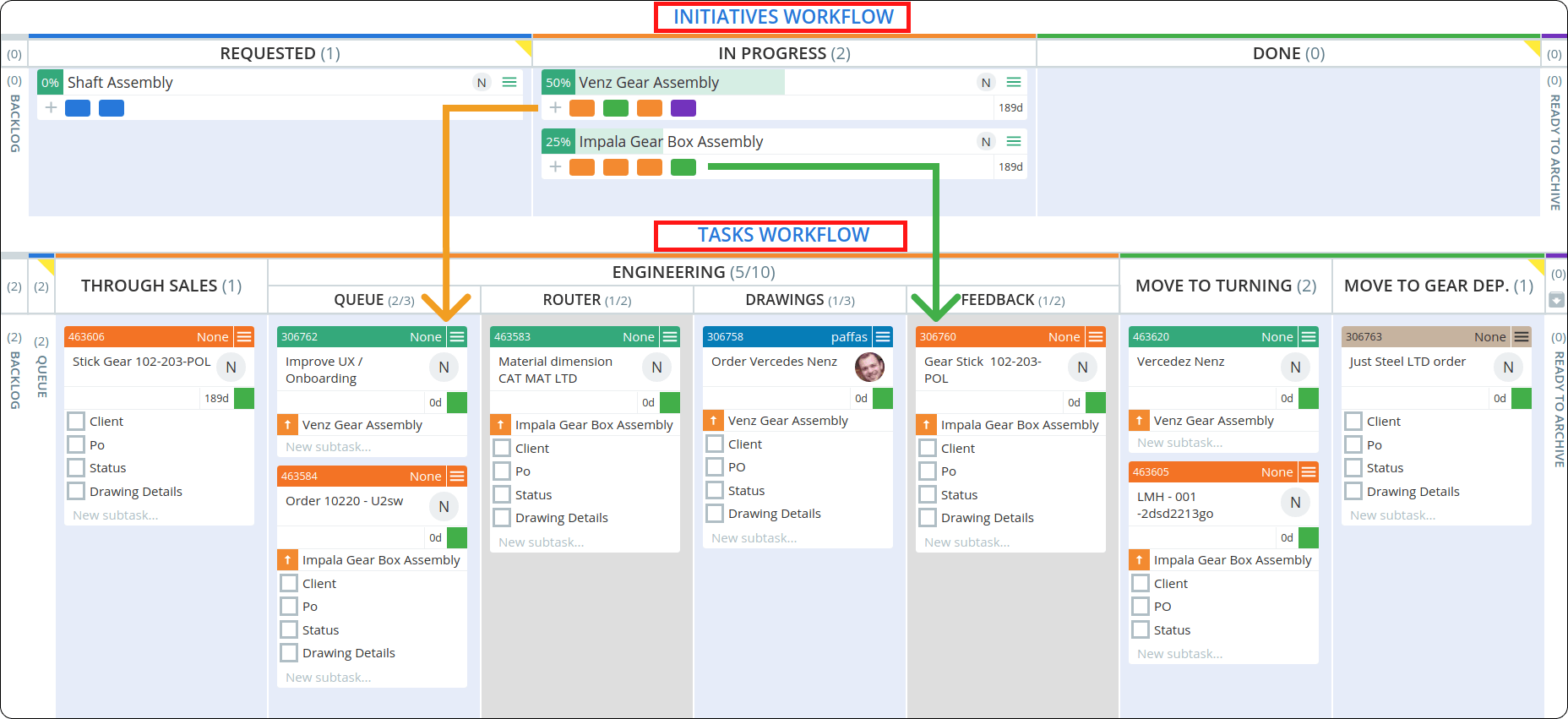
Kaizen and Kairyo
As already mentioned, continuous improvement is one of the key principles of Lean. However, it is not something you can just check out of your to-do list.
Kaiyro and Kaizen represent the combination of continuous self-development efforts on a personal level and the continuous improvement efforts on a team and organization levels that can result in actual performance and efficiency improvements. In the context of project management, practicing Kairyo would mean to regularly reassess the project process to eliminate waste and maximizing productivity and efficiency, or going on a Gemba walk to identify process improvement potentials.
In the context of project management, practicing Kairyo would mean to regularly reassess the project process to eliminate waste and maximizing productivity and efficiency, or going on a Gemba walk to identify process improvement potentials.
The Gemba walk is an application of the principle of observing work as it occurs and where it occurs. The core idea is that work processes' improvement potential can be best identified in real-time and in the actual work environment. In Lean, Gemba's purpose is to observe, engage, and improve and should occur where the most critical activity happens.
Although very often the Gemba walk is only associated with manufacturing, as there you have a physical production line you can observe, it is a powerful tool for project management too.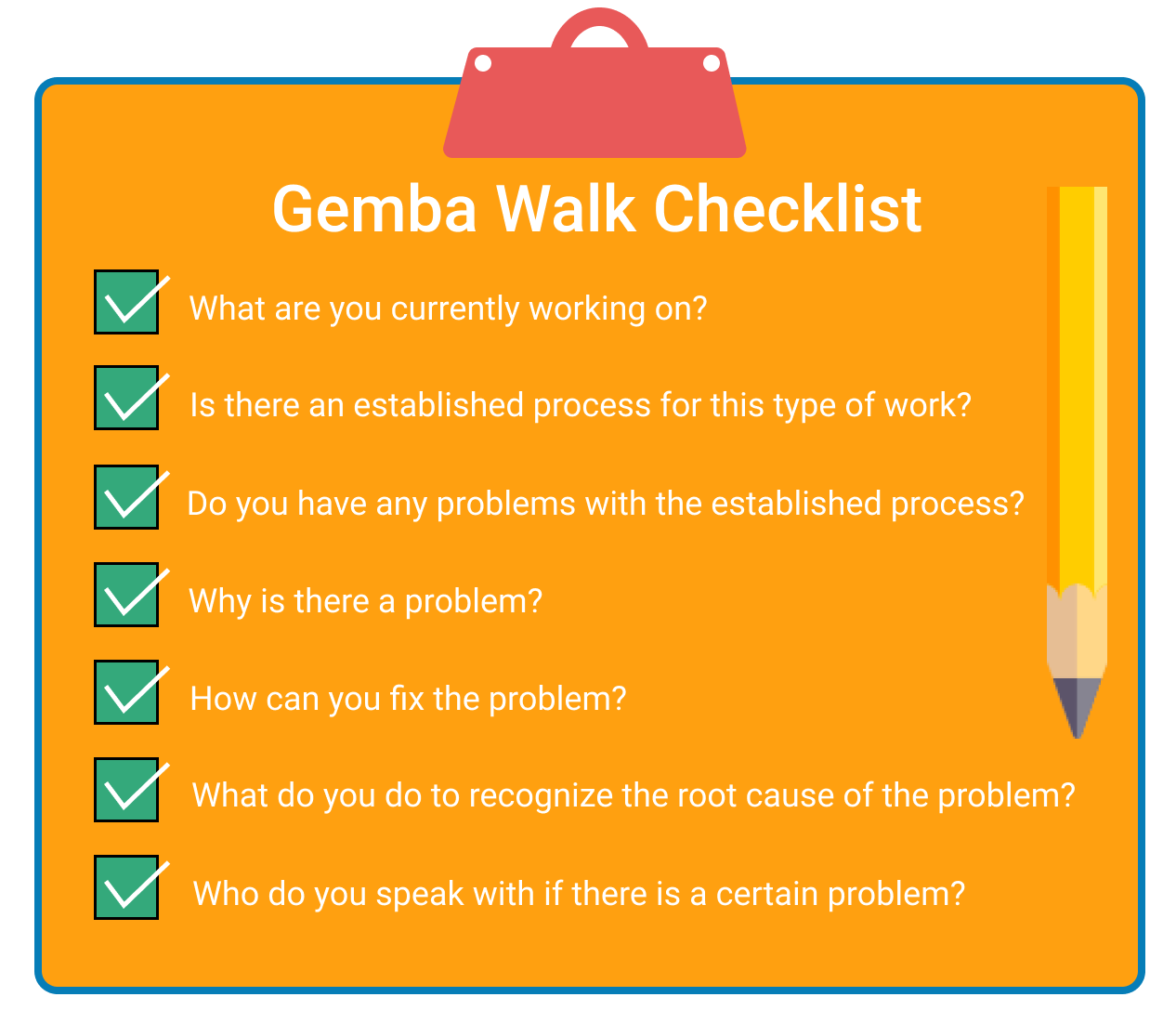 Following the Gemba checklist can help project managers improve the project process and eliminate stumble stones from the workflow before they cause damage.
Following the Gemba checklist can help project managers improve the project process and eliminate stumble stones from the workflow before they cause damage.
Lean Project Management in a Nutshell
- Lean Project Management requires looking at your project as a value stream
- It is focused on value delivery from the customer's perspective, cutting down project waste to optimize efficiency and continuously improving the project process to increase customer satisfaction
- Contrary to traditional project management, Lean does not distinguish between project phases. The focus is on following the five core principles of Lean management cyclically.
- Eliminating project waste and creating a pull system is central to increasing the efficiency of your projects.
- One of Lean project management's main goals is to create a stable workflow - to make the project delivery uninterrupted and predictable.
- Choosing and combining different Lean Management tools like a PDCA cycle, Kanban board, and Gemba checklist will support the transition from traditional to Lean project management
We offer the most flexible software platform
for outcome-driven enterprise agility.




